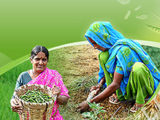The traditional approach of providing printed insect pest and disease fact sheets and brochures to farmers and their advisors helped with the early identification of pests not previously encountered. These fact sheets also provided information on what action needed to be taken, including notifying biosecurity authorities. Digital publications, that are accessed online and/or via mobile phones, are rapidly replacing paper-based fact sheets.
The two fact sheet systems described below are free to access online or with Android or Apple applications. Both operate in a similar way; providing information to help identify and diagnose pest problems, what treatment is likely to be appropriate, and the action needed to help prevent the problem occurring in the future. After selecting the crop concerned, a series of simple questions are asked, thereby characterizing the likely problem until a match is possible by comparing images. Both systems are updated frequently to provide up-to-date information to users.
CABI – Plantwise Factsheets Library
Plantwise is a global programme designed to increase food security and improve rural livelihoods by reducing crop losses. Plantwise Factsheet apps (Android and Apple) are written by partners in Plantwise countries to give a quick outline of how to recognize a crop problem, a little background information about the problem, and step-by-step instructions on how to manage the problem – see screen shots.

Pacific Pests, Pathogens and Weeds
This system, originally focussed on extension staff and lead farmers in the Pacific region, is also relevant to many crops in Southeast Asia. There are three free versions, an online web based app, an Android and an Apple mobile app, where users have the option of viewing detailed fact sheets that are divided into sections on damage, biology, life cycle, and management – see screen shots. Mini-fact sheets provide the most relevant information that growers need for their purposes. As mentioned above, this system is now integrated with the PestNet community support system.

Fact sheet development tools
While the creation of digital fact sheets requires the input of taxonomists, agronomists, and other subject matter specialists, in many situations, technical software expertise for developing templates, sizing images, and dealing with digital tasks will not be available. To address this problem, and to provide more effective tools for producing and publishing digital fact sheets, two software tools have been designed and developed to specifically allow content experts to focus on the content of the fact sheet, choose specific designs, and leave the digital implementation to the underlying software.
Fact Sheet Fusion was originally designed to reduce the demand for technical support from identification key developers for such activities as:
- listing relevant topics and importing species information,
- importing and editing text,
- adding, editing, and sizing images (using a customized multimedia database),
- supporting a range of pre-determined outputs such as HTML, PDF, XML, and
- converting raw information into chosen fact-sheet templates and performing related tasks, such as searching for and automatically creating hyperlinks to similar species.
A similar web-based tool, Fact Sheet Manager, developed by the Identification Technology Program (ITP) of the United States Department of Agriculture’s Animal and Plant Health Inspection Service (USDA/APHIS) is for internal project use, and primarily to help create and maintain digital fact sheets associated with ITP projects, involving USDA and other federal or contracted staff. Both these systems allow content experts to easily update the raw data in the tool, and share this information with other users, who can then edit it for their specific location and language, and deploy the fact sheets as web pages, PDF leaflets, and attachments to keys.
